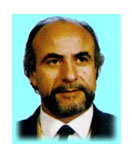 Lello Crispini
Lello Crispini
Dr. Lello Crispini has been one of the first Italians to graduate in chiropratice. In fact he has achieved the title of DOCTOR IN CHIROPRACTICE at the most prestigious College of Chiropratica of the world, PALMER COLLEGE OF CHIROPRACTICS of Davenport , Iowa , U.S.A. , in 1977.
From 1979 to 1983 he has been President of the Italian Chiropratice Association.
In 1981 he has been Secretary of the First World Chiropractic Conference in Venice . Lecturer, is author of various scientific papers and of articles he published on specialistic reviews.
From 2001 Group is Vice-president of the G.S.M.N., acquiring a remarkable experience also in nutritional field.
From 2003 Italian Association is Vice-president of the AIC (Chiropractors).
He works on his studies of Milan and Bergamo where it follows his patients with his composed team of specialists from chiropratics, doctors dentists, between most expert than dental occlusion and posture, from optometrists - opticians, nutritionists and experts of Natural Medicines.
From quadruped to Bipede - Hypothesis of the human metamorphosis
The quadruped has a very prominent mandible relating to the cranium strong
extensor neck muscles relating to the weak flexors because he uses the mouth
not only to eat but also to offend, to take and transport things.
The biped,
instead, because was able to free hands and arms from the ground, had to
adapt the new body posture to the gravity weight. The prehensile and offending
functions were performed by the hands and the mouth has acquired the neurological
reflexes of the anterior limbs, with the afferent input as they would have
been striking to the ground.
Gradually the mandible was retruded to locate
the inferior dental arche internally to the superior ones; the temporal mandibular
joint was then located exactly to the skull center; the latter was evolved
superiorward and the mastoids processes inferiorward allowing a bigger development
of the brain ( cerebral cortex).
The strength of the flexors and extensor
muscles is equal and is continuously monitored by the swallowing mechanism
(for about 1.500 times daily).
The feet represent the other "esteroceptive" mechanism
of body equilibrium; they had in part to rearrange their function, developing
a plantar arch to guarantee good static functions and an adeguate transmission
of facilitatory and inhibitory impulses to the muscolar chain used in an
involuntary and automatic way on walking and running.
We must remember that
when we walk as a leg goes forward and viceversa, using in this way the ancestral
reflexes of the quadrupeds!